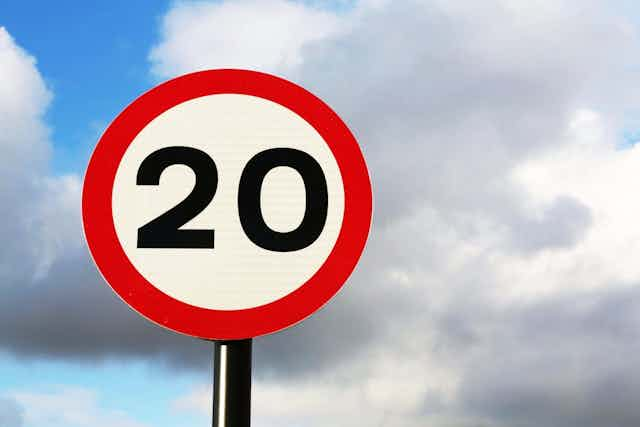A new speed limit of 20mph has been proposed for roads in central London. The plans, which would reduce the limit to 20mph within the Congestion Charging Zone, are part of the “Vision Zero” strategy, which aims to “eliminate deaths and serious injuries from London’s transport network by 2041”.
The main reason for reducing traffic speed is to lessen the likelihood of a collision – and to reduce the severity of road traffic casualties. Research indicates that if a pedestrian is struck by a vehicle at 24mph, they have a 10% risk of dying. This goes up to 25% at 32mph, and 50% at 41mph. A reduction in speed of as little as 1mph is associated with a reduction in casualties of up to 6%.
Yet plans for the 20mph limit in London have been controversial. Some question the impact it will have on increased traffic congestion and air pollution. Retailers are concerned it will discourage customers from visiting the city centre due to increased congestion. Others question the need for a 20mph limit in areas where congestion means it is rarely possible to go any faster than that. So what’s the evidence on 20mph limits so far?
Many look to the example of Bristol to support the introduction of 20mph limits. Headline findings have so far suggested that “four lives a year are saved” in the city, which reduced speeds in 2014 and 2015. It has also been estimated that Bristol has saved over £15m per year due to lower casualty rates.
Elsewhere, results from pilot schemes in Edinburgh and Portsmouth indicated an overall reduction in speed of between 0.9mph and 1.9mph on roads where 20mph limits were implemented. In Portsmouth, an average reduction of 6.3mph was seen on roads that were characterised by speeds of over 24mph before the lower limits were introduced. The city also showed a 22% reduction in reported road casualties where 20mph maximums had been introduced.
The pilot research has also indicated that 20mph limits in Bristol and Edinburgh have led to increases in people choosing to walk (up to 10%) or cycle (up to 5%). Other studies have shown increases in perceived road safety, and the pleasantness of residential environments.
But others are more swayed by what has happened in Manchester, where the supposed benefits of 20mph limits have been questioned. There, a drop in the number of accidents in 20mph zones was not as great as it was on some faster roads. In light of these findings, Manchester City Council reviewed their 20mph scheme and withdrew funding.
An overall review of previous research concluded that 20mph schemes can reduce accidents, injuries and traffic volume, and improve perceptions of safety, while being cost effective. However, of the ten studies included in the review, only two focused specifically on speed limits (use of 20mph signage without physical interventions such as speed bumps).
The review also found a lack of evidence assessing the impact of such schemes on addressing social inequalities – road casualties are higher in the most deprived areas.
What is less clear are the potential risks of implementing such schemes, particularly for noise and air pollution. Some argue that lowering traffic speed will lead to increased congestion and consequently increased air pollution. On the other hand, if 20mph speed limits are successful in encouraging more sustainable travel modes then this will result in a reduction in air pollution.
The evidence to date is somewhat limited because of a lack of robust, long-term evaluations. In particular, there has not been enough investigation into their economic impact and cost effectiveness.
Looking at the signs
So what can London learn from the evidence so far? The first lesson is that communication is key – it is vital the public is kept up to date with plans. It is also important to have an evaluation plan which includes interim analyses, so that any changes made are based on solid evidence.
And that evaluation should be a broad one. As well as measuring changes in traffic speed, and the number and severity of collisions, include other measures such as changes in behaviour when it comes to travel mode and liveability.
In our increasingly congested cities, more must be done to move towards sustainable modes of travel – and for society as a whole to become less reliant on cars. However, changing social norms will take time, and in order to be successful, local authorities must ensure they engage with the general public when implementing ambitious transport plans.
London is the latest city in an ever growing list to implement 20mph speed limits. At the “Is 20mph plenty for health?” research team, we would encourage London to learn lessons from the other cities – and to share its knowledge as we continue to build the evidence base for 20mph speed limits.

